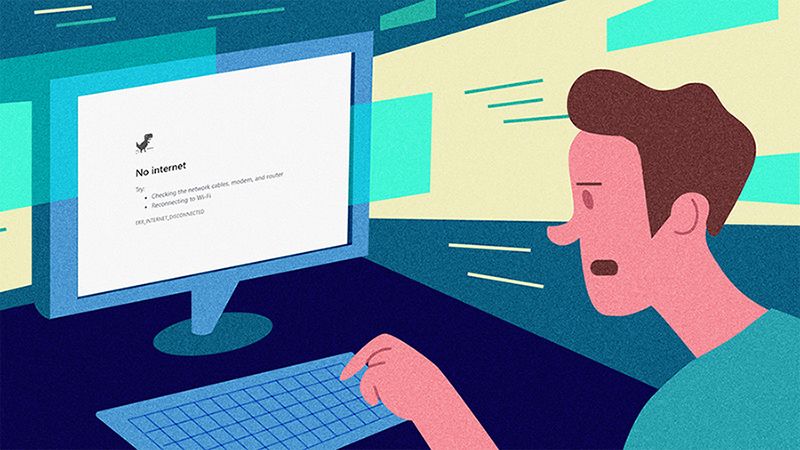When the internet went down yesterday, sort of

In today's Finshots we talk about the recent internet outage and the kind of economic impact it can have
The Story
In 1988, a graduate student wrote a piece of code and introduced it to ARPANET — the Internet before the Internet. The code managed to infiltrate large parts of the network and took out almost 10% of all online computers at the time. It was such a massive breach that it caught the attention of the national press. And Robert Morris, the student responsible for the code was later indicted by Federal Prosecutors for his role in the crime.
Morris would later go on to become a renowned computer scientist, an internet entrepreneur, and a co-founder at YCombinator, but not before proving to the world how fragile the internet could be.
What’s worse? Almost 3 decades later, the vulnerabilities still exist. It’s possible to take out large parts of the internet almost instantaneously and users got a taste of it yesterday when they failed to connect to their favourite websites — including Amazon, Reddit, Stackoverflow, and Pinterest.
PINTEREST!!!
Imagine that.
This time around though, it wasn’t because of Robert Morris, or the kind of exploit he originally conceived. This outage is being attributed to Fastly — a popular CDN service provider. And if you’re wondering what a CDN is? Welcome to the club.
Because, nobody ever talks about CDNs or Content Delivery Networks, until they go down. These bad boys affect almost everything we consume on the internet and they are indispensable to our cause. As one article points out —
To understand why CDNs are so widely used, you first need to recognize the issue they’re designed to solve. Known as latency, it’s the annoying delay that occurs from the moment you request to load a web page to the moment its content actually appears onscreen.
That delay interval is affected by a number of factors, many being specific to a given web page. In all cases however, the delay duration is impacted by the physical distance between you and that website’s hosting server.
So if we host our content on a computer (server) here in Bangalore and you want to access it in the US, it takes time for the computer to “serve you this content” if we are separated by thousands of miles. However, if we could host the content in a system that’s closer to the US, maybe it won’t take as much time for you to load our webpage. And CDNs are bridges that facilitate this exercise.
Okay, this bit isn’t entirely accurate. But the explanation should suffice for now.
Anyhow, Fastly reported that a glitch in their system took down large swaths of the internet momentarily and while they did fix the issue in just an hour, it was still time enough for people to start talking about the impact of centralization and why businesses may need to build redundancies to prevent such problems.
Because back in 1988, the damage was limited. It took some time for people to partition the internet and fix the issues, but damages only ranged from $200 to about $50,000. But that’s no longer the case today. When the internet breaks in 2020, the damages run into the millions.
For instance, back in 2017, when one of Amazon’s engineers was debugging an issue with their billing system, he made an error that took down large parts of Amazon Web Services (AWS). And considering most companies host their content on AWS, multiple websites were down under for extended periods. In fact, according to one report this single error cost S&P 500 companies a whopping $150 million in just under 4 hours. Financial services companies lost another $160 million.
So if you’re wondering how vulnerable the internet is today and the kind of impact it can have, this should ideally serve as a useful case study.
Until then…
Don't forget to share this article on WhatsApp, LinkedIn and Twitter
